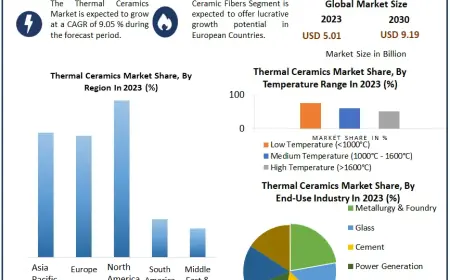Feeling the Boom: Vibration Sensor Market Size Vibrates with Double-Digit Growth
Infinium Global Research's new report dives deep into the vibration sensor market, analyzing segments, drivers, restraints, and trends. It forecasts a healthy CAGR of 7.07% for the global market from 2021-2027, providing valuable insights for informed business decisions.
Infinium Global Research's new report dives deep into the vibration sensor market, analyzing segments, drivers, restraints, and trends. It forecasts a healthy CAGR of 7.07% for the global market from 2021-2027, providing valuable insights for informed business decisions.
The vibration sensor market is expected to be driven by the automotive industry. With a focus on automation and production line upgrades, car manufacturers increasingly rely on motor monitoring and vibration sensors. These sensors help reduce equipment failures, extend machine life, and ensure smooth production by detecting potential issues early on. As car production ramps up, the demand for reliable vibration sensors within the automotive industry is poised for significant growth. The vibration sensor market is a crowded space with many players. Established global brands like Texas Instruments, Honeywell, and Emerson hold a significant advantage due to their strong brand recognition. This brand loyalty can make it tough for new entrants to gain traction with consumers. In short, the competition is fierce, and a well-known name can be a major asset in this market.
Get Sample Pages of Report: https://www.infiniumglobalresearch.com/reports/sample-request/28419
Market Dynamics
· Driver: The shift from preventive to predictive maintenance in manufacturing is fueling the vibration sensor market. These sensors play a crucial role in predictive maintenance by detecting early signs of wear and tear in equipment, preventing costly breakdowns and downtime. This trend is particularly strong in capital-intensive industries like automotive and oil & gas.
· Restraint: A sticking point for vibration sensor growth is adhering to strict regulations. These standards, set by organizations like the ISO, dictate how sensors are built and analyzed. While they ensure quality, they can limit manufacturer flexibility and inflate production costs.
· Opportunities: The vibration sensor market is poised for growth due to advancements in sensor technology. Wireless, fiber-optic, and MEMS sensors offer improved accuracy, durability, and remote monitoring capabilities. These innovations are creating exciting opportunities for the industry.
Regional Analysis
North America currently reigns supreme in the global vibration monitoring market, driven by their strong adoption of innovative solutions across various industries. However, the Asia Pacific region is expected to experience explosive growth in the coming years. This surge is fueled by the region's rapid industrialization and increasing emphasis on predictive maintenance practices for machinery. In short, the future of vibration monitoring is bright, with Asia Pacific poised to become a major market player.
Market segmentation
· By Components: Analyzes hardware (physical sensors), software (data analysis tools), and services (installation, maintenance).
· By System Type: Explores different sensor systems like embedded systems (integrated into machines), vibration analyzers (advanced data processing), and vibration meters (basic measurement).
· By Monitoring Process: Examines how vibrations are monitored, including online systems for continuous monitoring and portable systems for on-demand checks.
· By End-Use Industry: Identifies key industries utilizing vibration sensors, such as energy & power, metals & mining, oil & gas, automotive, food & beverage, and more
Competitive Landscape
· Emerson Electric Co.
· General Electric
· SKF AB
· Meggitt PLC
· National Instruments Corp.
· Bruel & Kjaer (Sound & Vibration Measurement A/S)
· Analog Devices Inc.
· Rockwell Automation Inc.
· Honeywell International Inc.
· Schaeffler Technologies AG & Co. KG
Report overview: https://www.infiniumglobalresearch.com/reports/global-vibration-sensor-market
Future outlook
This report serves as your roadmap to the future of vibration sensors. It provides not only forecasts from 2021-2027, but also explores emerging trends that will significantly impact future demand. By understanding these future trends, you can make informed decisions and capitalize on lucrative opportunities within the vibration sensor market.
Conclusion
The vibration sensor market is on track for a promising future, driven by a projected CAGR of 7.07% from 2021-2027. Key drivers include the rise of predictive maintenance in manufacturing, particularly within the automotive industry, and advancements in sensor technology offering greater accuracy and remote monitoring capabilities. While regulatory hurdles exist, the Asia Pacific region's booming industrial sector is expected to be a major growth engine. This comprehensive report by Infinium Global Research equips you with valuable insights into market trends, segmentation, and key players to navigate this dynamic market and capitalize on future opportunities.
What's Your Reaction?
 Like
0
Like
0
 Dislike
0
Dislike
0
 Love
0
Love
0
 Funny
0
Funny
0
 Angry
0
Angry
0
 Sad
0
Sad
0
 Wow
0
Wow
0
















































